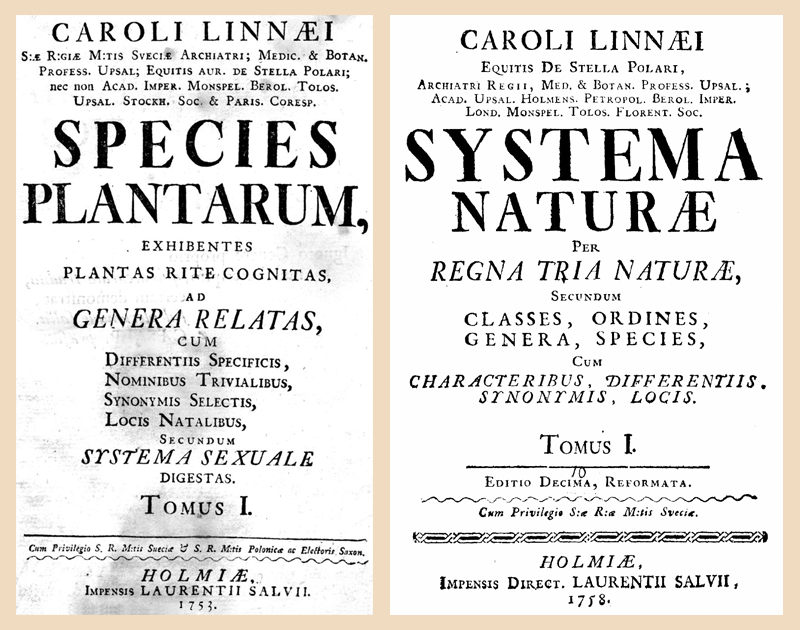The Naming of Animals and Plants
Today the basis for the denomination of animals and plants is the binominal nomenclature that was introduced by the Swedish naturalist Carl von Linné (1707 to 1778, born as Carl Nilsson Linnaeus [Linnæus]) in 1753 for plants («Species Plantarum») and in 1758 for animals («Systema Naturae», 10th edition).
For taxonomists those dates mark the beginning of the erection of valid rank-based scientific names. The detailed rules for the designation of taxa are written down in regularly updated basic rules publications, the International Codes of Nomenclature (see issues above).
Binominal nomenclature means that a species is clearly indicated by a two-part name consisting of the genus term and the species one, for example Homo sapiens for humans or Canis lupus for the wolf. According to the international agreement genus and species names have to be written in italic. Moreover, genus names must start with a capital, species names with a lowercase letter. The scientific name of a taxon usually is accompanied by the name of the author who erected it as well as the year of its introduction, such as Homo sapiens LINNAEUS, 1758 or Canis lupus LINNAEUS, 1758. If the author of the original publication assigned the species to a different genus, the author’s name is put in brackets. The latter is the case in Stenopterygius quadriscissus (QUENSTEDT, 1856) for instance, the current binomen of a Mesozoic ichthyosaur. On this website and on our products the author’s name is consequently written in capitals and separated by a comma from the year of the erection of the taxon.
Since the nineteen-sixties the so called phylogenetic nomenclature has gained ground, which is inspired by the cladistic method that uses hierarchical taxon names and, therefore, arranges taxa in hierarchical evolutionary trees without ranks. Currently a new basic rules publication is being developed that can be applied to names of clades, the International Code of Phylogenetic Nomenclature (PhyloCode). Linnaean ranks will be optional under the PhyloCode that is intended to coexist with the rank-based codes.
> International Commission on Zoological Nomenclature (ICZN)
> International Association for Plant Taxonomy (IAPT)

Title pages of Carl von Linné’s publications mentioned above

